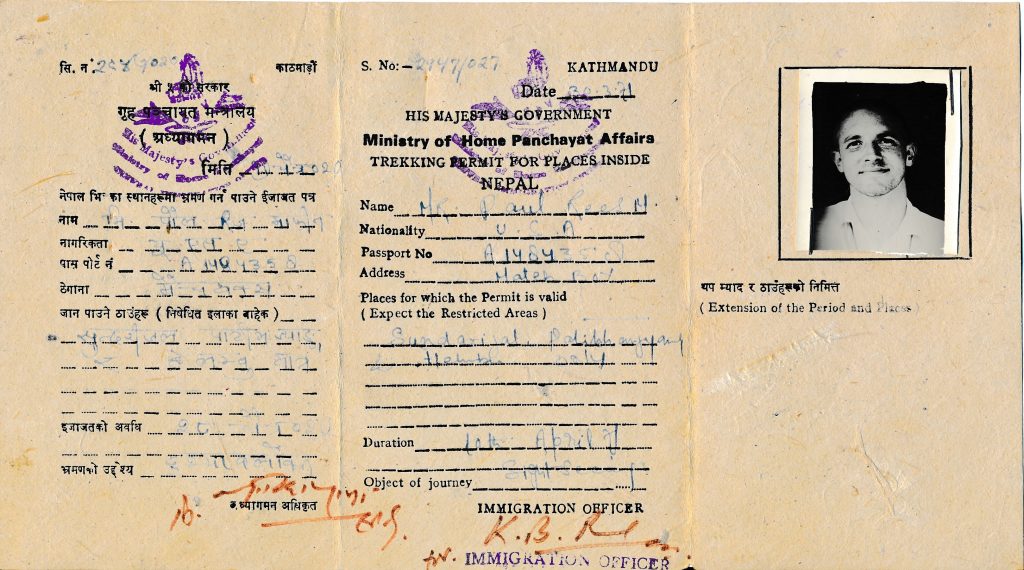Trekking toward Everest
Armed with our precious trekking permits, Richard and I began our climb into the foothills of the Himalayas on March 31, 50 years ago.


Our route was to the northeast of Kathmandu. The first day we did nothing but climb and end the day at the “high point” of our trip, a small village of six houses on an 8,000 foot peak. Most of our trip, the weather was quite hazy, but we were fortunate in having the sky clear just before sunset for a superb view of the snows. Unfortunately, I didn’t manage to capture a picture of that moment, but I do have a picture of the village.
Almost every village on the main trekking routes has one house that provides meals and a place to sleep. The second day, we descended to Patibhanjyang, which is in a 6,500 foot mountain pass, had lunch and climbed the 7,800 foot peak on the other side. Descending, we somehow got off on a side trail and ended up in a small village that hadn’t see too many Westerners. After several tries, we managed to communicate with the inhabitants of one house that we were willing to pay if we could sleep there and eat with them. We got the royal treatment including chhang, which is the local “home brew” made from corn.
The third day we did a short hike to Talamarang, which is at the juncture of two fairly large rivers. We had most of the afternoon to swim—there was a pool deep enough to dive into. We also got to cross one of the bridges for which Nepal is famous—one board suspended between two chains. We put in a full day the next day, ending up in a beautiful village on top of a medium-sized hill. We had a short walk the next morning to the China road, where we caught a bus into Kathmandu.
The beauty of the land and people of Nepal is something that can’t be put into words or captured in pictures. The Sierra Club’s first Everest book did a credible job as far as pictures are concerned, and it was my inspiration for the trek. I had the disadvantages of haze and a cheap camera. The Nepali have deep black eyes and expansive smiles, which would draw even Ebenezer Scrooge into a jovial mood. Most available arable land is terraced and planted in wheat or barley and is an otherworldly green.

After Richard and I returned to Kathmandu, I spent a couple days and then bid farewell to the members of our Zen meditation group. I was back on the road again, heading back to India for a final visit with the Stringhams and then back on the road alone for the return trip overland to Switzerland (or so I thought). I crossed the border back into India on April 6. My tourist visa allowed me until April 22 to leave India. I ended up cutting it perilously close.


